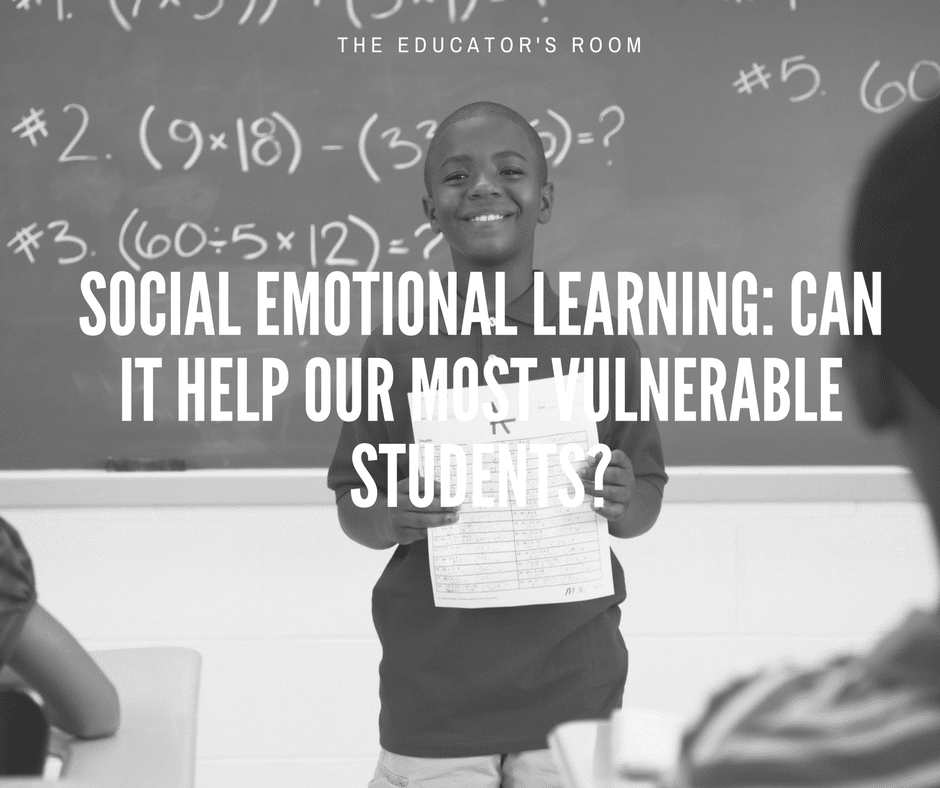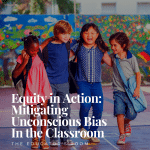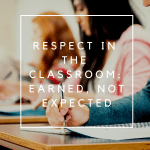Imagine you have a student who every time they get upset they decide to engage in some negative behavior that totally disrupts your class? Whether the behavior is yelling or banging their head on the desk, there’s an obvious need for a different approach to working with students who come to school with a myriad of issues. For our most trauma induced students, Social Emotional Learning (SEL) is a panacea to solve all the problems that many of these boys face? Hardly, but it is a tool that may help them survive traumatic worlds.
I am not new to SEL in the classroom. The school where I taught for many years has a demographic of about 80% Latino and nearly 90% low-income students. This Chicago Public School has used Responsive Classroom, a form of SEL, since the 1990s. It is ingrained in the fabric of the school and community. Responsive Classroom believes social learning is as important as academics and utilizes many management and philosophical strategies to accomplish that goal.
Last winter, I began working with two schools on the south side of Chicago that are 99% African American and on average 98% low income. I am teaching mindfulness ( a form of SEL) to Kindergarten to Second Grade classes once a week using Calm Classroom curriculum. It is part of an Erikson Institute study that hopes to show a correlation between reducing stress in children in toxic environments and increased learning. To me, that is a no-brainer, but it is important to have empirical evidence. Through techniques, strategies, and discussions, we teach the students how to use mindfulness strategies when they encounter big emotions or fears.
[bctt tweet=”We teach the students how to use mindfulness strategies when they encounter big emotions or fears.” username=””]
While both programs teach many strategies, in my teacher mind they are not mutually exclusive. Being a veteran teacher who lived and breathed Responsive Classroom (not perfectly, I am a human teacher) it is impossible for me to leave that behind in my Calm Classroom schools. When I am with my other students, Calm Classroom techniques slide into their world without me thinking of it.
Back to the question at hand; do either of these strategies work with our boys, especially our Latino and African American students? Here is what I have seen with my own eyes through a study on Responsive Classroom, these strategies, when consistently taught, make a difference in behavior. The children have tools and expectations that are made clear to them, so they have ways to handle an upsetting incident without making a situation worse. They can use these techniques to find a step out of their frustration/anger they may encounter during the school day.
My school where Responsive Classroom is taught has very few bullying problems. Nearly all of the problems are with children who new to the school. Depending on the size of the issue, these children (usually boys) settle down after a few months. There are a few exceptions which largely include mental illness, long term systemic problems (i.e. a child bounced around in the welfare system), or, most frustrating of all, families who refuse to get on board and set limits.
It is a little too early to say for my Calm Classroom kiddos, as they have only been in the program for a year. I see many, many glimmers of hope. The settled slip into quiet in the classroom that occurs each time we ring the chime as we start our sessions is one. The responses in conversation about how to deal with emotions or how to practice self-compassion are reassuring. My favorite is when we asked a Kindergarten class how they used Calm Classroom at home, a boy raised his hand. “I shut my eyes and think about going to the store. I am buying food. I am buying bacon.” It is such a sensory thought that all the adults in the room laughed with understanding.
[bctt tweet=”“I shut my eyes and think about going to the store. I am buying food. I am buying bacon.” ” username=””]
The goal of both of these SEL programs is to give children the experience in ways to handle life’s rough spots. Some of these kids will and do have many, many rough spots in their daily lives. What makes these programs effective is really the buy in by the school’s administration and the staff. Teachers have to walk the walk of these strategies by modeling them and practicing themselves when things get crazy in the classroom. The security guard has to know the language when he or she is talking to an upset child. The administration has to not only say it is okay to use these programs but they also have to practice it themselves in the way they respond to children, teachers, and parents.
[bctt tweet=”Teachers have to walk the walk of these strategies by modeling them and practicing themselves when things get crazy in the classroom.” username=””]
When we teach, we never know what little thing we say or do that will make a difference in a child’s life. It is far more likely to reach a typical boy, one who wiggles more than he should, who likes to brag and be a show-off, who find math or reading frustrating, and who fights with his siblings, if we model the behavior and talk about it. With our children who have lives we can’t imagine living ourselves, it is even more important to show them, and teach them these skills over and over until they become ingrained into the fabric of the school life.
Whether they escape from their frustrations by taking a few deep breaths, looking out the window, or imagining bacon, I believe we buy our boys time to step back from making bad choices based on emotion by giving them the tools that SEL programs have to teach.
We know the old adage: Give a man a fish and you feed him for a day. If we teach a man to fish, we feed him for a lifetime. We don’t teach a person to fish by just giving him a hook. We teach him to fish by sitting next to him, showing how to find likely fishing holes in the stream, and how to wait patiently. The same is true with SEL techniques.






